The new “Direct Anterior Total Hip” approach is a remarkable improvement in primary total joint replacement surgery. A special table is used (HANA table) that pulls traction on the leg allowing the surgeon to complete the procedure without cutting a single muscle!
New Technologies Allow Joint Replacements to Last Longer
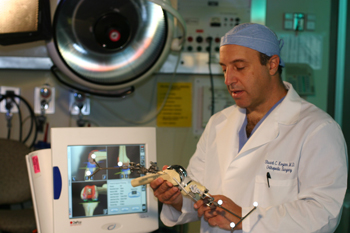 The “six million dollar” man may not be a fictional concept much longer. Orthopedic surgeons are enjoying increased success at replacing human joints with better and longer lasting biocompatible “machines”. Space age bio-materials and computer assisted improvements are now helping patients with joint pains and arthritis live a better and more active life. Most people personally know a friend or relative who has had a total hip or total knee replacement. The general perception in the past was that joint replacements are very successsful at relieving severe pain but they have a relatively short lifespan, requiring revision within 15 years. Newer technologies are predicted to improve the lifespan of modern joint replacements to 30 years and beyond. It is now possible to do these operations on younger, more active patients, and feel really good about the long term prospects.
The “six million dollar” man may not be a fictional concept much longer. Orthopedic surgeons are enjoying increased success at replacing human joints with better and longer lasting biocompatible “machines”. Space age bio-materials and computer assisted improvements are now helping patients with joint pains and arthritis live a better and more active life. Most people personally know a friend or relative who has had a total hip or total knee replacement. The general perception in the past was that joint replacements are very successsful at relieving severe pain but they have a relatively short lifespan, requiring revision within 15 years. Newer technologies are predicted to improve the lifespan of modern joint replacements to 30 years and beyond. It is now possible to do these operations on younger, more active patients, and feel really good about the long term prospects.
Previous recommendations to avoid certain sports and jobs of labor are softening as we see patients doing better with activities such as tennis, golf, and skiing. Our patients play all sorts of sports after anterior hip replacements, and more and more total knees are doing more activities. Major advances involve using less invasive “tissue sparing” approaches to the hip and knee joints. We can do total hips without cutting any muscles at all. By limiting the soft tissue trauma as the implants are placed into the skeleton, the functional recovery is accelerated. As the Medical Director of the Scottsdale Healthcare Total Joint Replacement Center on the Osborn campus, we have established a program that emphasizes a very rapid recovery. All patients are assisted to walk about one hour after their surgery is completed with full weight bearing. Patients have their surgery with a air pumping boot on the non-operative leg to keep blood circulating at all times, and they are up walking so fast and they spend less time in bed. We have seen a huge decrease in problems with vein disease and clotting, and most patients are treated with two simple aspirin pills a day to help thin the blood. Many patients can choose to go home the same day as surgery. New techniques in “regional” anesthesia have decreased the pain associated with knee replacement surgery. A femoral nerve block for knee replacement surgery is placed in the pre-operative area which greatly decreases the knee pain upon waking up, yet still allows early ambulation. Knee implant designs are also improving, which will significantly increase the life span of total knees. Rotating platform knees can adapt better to many patient activities in my opinion.
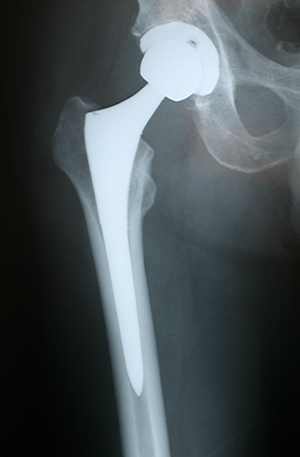 Both a fixed bearing and a mobile bearing design with highly cross-linked polyethylene inserts are used in younger and more active patients. The rotating platform allows a few degrees of twisting motion in the knees during sports such as tennis and golf, and can act as an additional shock absorber over the long term in very young patients Partial knee replacements are done in patients with an arthritis limited to one side of the knee. These are done through a very small incision that does not violate the quadriceps muscle, and recovery is very rapid. A mobile bearing partial total knee is available that has greatly extending the lifespan of the implant. Patients with partial knees often go home after a one night stay in the hospital, and in most cases do not need formal physical therapy to regain their knee motion. The partial knee procedure is also less stressful on elderly patients and patients with significant heart or vascular disease.
Both a fixed bearing and a mobile bearing design with highly cross-linked polyethylene inserts are used in younger and more active patients. The rotating platform allows a few degrees of twisting motion in the knees during sports such as tennis and golf, and can act as an additional shock absorber over the long term in very young patients Partial knee replacements are done in patients with an arthritis limited to one side of the knee. These are done through a very small incision that does not violate the quadriceps muscle, and recovery is very rapid. A mobile bearing partial total knee is available that has greatly extending the lifespan of the implant. Patients with partial knees often go home after a one night stay in the hospital, and in most cases do not need formal physical therapy to regain their knee motion. The partial knee procedure is also less stressful on elderly patients and patients with significant heart or vascular disease.
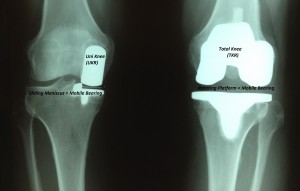
On the total hip side, new materials will likely lead to longer lasting hips. High strength and light weight porous titanium implants encourage bone ingrowth creating a potentially permanent bond with the skeleton. Much improved bearing surfaces have been shown to last many more years before wearing down, and may never wear out in some patients. This includes ceramic materials, and very dense polyethylene plastic which in laboratory testing lasts many more years than earlier plastics. When these plastics are soaked in Vitamin E during manufacture, they resist oxidation, and last longer. Larger diameter femoral heads are now routinely used to increase hip stability and range of motion. This allows patients to do more activities earlier, as the risk of hip dislocation is much less than it used to be with smaller diameter femoral heads. Because the anterior hip procedure cuts no muscles, hips are much more stable, and very few restrictions are given to post op patients.
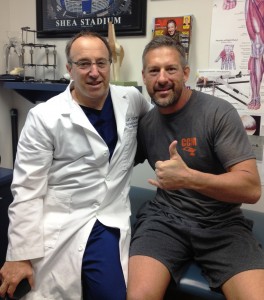
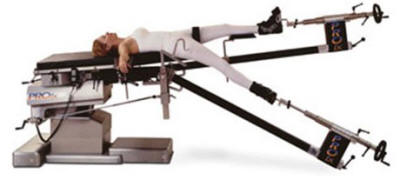 The new “Direct Anterior Total Hip” approach is a remarkable improvement in primary total hip surgery. A special table is used (HANA table) that pulls traction on the leg allowing the surgeon to complete the procedure without cutting a single muscle. Some patients can go home the same day as the surgery, but most stay overnight and go home in the morning with no hip dislocation precautions. This creates an extremely fast recovery, back to work, or back to golf and other sports. Many of my patients tell me they have no pain, and others often use only Tylenol or Motrin for pain relief. Quite remarkable! The bottom line is that younger patients are now better candidates for joint replacement surgery than in the past. More patients are choosing to get rid of their disabling joint pains and get on with the most productive times of their life. It is a very fulfilling time for joint replacement surgeons, as we feel we have more tools to offer patients better and more long lasting results than ever before.
The new “Direct Anterior Total Hip” approach is a remarkable improvement in primary total hip surgery. A special table is used (HANA table) that pulls traction on the leg allowing the surgeon to complete the procedure without cutting a single muscle. Some patients can go home the same day as the surgery, but most stay overnight and go home in the morning with no hip dislocation precautions. This creates an extremely fast recovery, back to work, or back to golf and other sports. Many of my patients tell me they have no pain, and others often use only Tylenol or Motrin for pain relief. Quite remarkable! The bottom line is that younger patients are now better candidates for joint replacement surgery than in the past. More patients are choosing to get rid of their disabling joint pains and get on with the most productive times of their life. It is a very fulfilling time for joint replacement surgeons, as we feel we have more tools to offer patients better and more long lasting results than ever before.